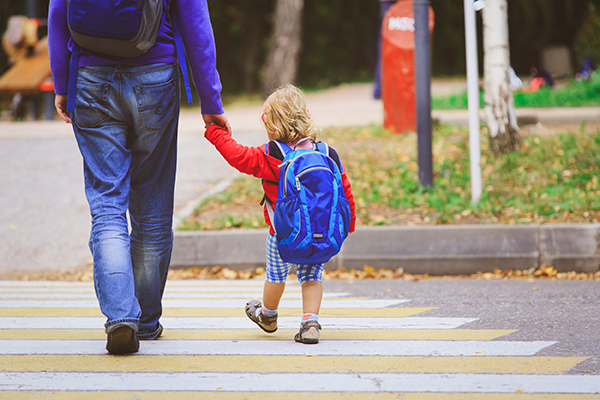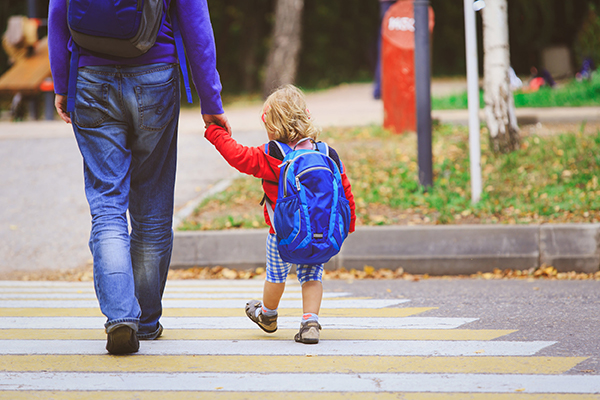
As the start of the school year approaches, parents of young children who are entering nursery school for the first time are wondering what the best way to prepare their child for this transition is. As someone who has supported children, their parents and the teachers of young children through this process for many years, I have several thoughts.
First of all, I will assume that parents, in going through the registration or enrollment process, have already become familiar with the school or child development center that their child will attend. If not, find out now about the philosophy and mission of the school and learn about the class size, center layout, and daily routine.
Familiarizing yourself with information about the school will help to calm any anxiety that you might have about your child’s transition. Your attitude toward the school or center, your child will be attending is the most significant factor in how your child will cope with this new routine.
As parents and caregivers, we want to strike a balance between communicating necessary information to children so that they know what to expect and giving them too much information – which may contribute to increased anxiety about a situation.
For example, talking to your children about nursery school, what and where it is, that it is a place where they will meet other children and play with lots of toys, is a good start. Mentioning it every day with lots of hype, asking them if they are excited, if they want to go to nursery school, etc., is not.
Of course, many children breeze through life’s transitions and for them, it is hard to get such situations wrong However, for others, they are more sensitive to change, and we cannot assume that they will be excited about an event for which they have no prior experience.
Moreover, that contrary to our instincts, bringing it up at every turn may actually heighten their anxiety about it. Of course, if the child brings it up, then by all means, answer their questions and most importantly, send the message that you feel positive about this next chapter in their lives.
Parents often ask me to recommend a children’s book that might help introduce the idea to their child. Frankly, most books that I have come across all touch on the topic of how scared a child might be, to go to school.
For some reason, introducing the notion that nursery school is a place that you might be afraid of going to, seems like a recipe for disaster for some children. It reminds me of when a toddler falls down, and all the adults in the room gasp and leap at the child. It does not give the toddler the opportunity to form their own conclusion about the experience, and more often than not, the child will start to cry based on the startled and scared reaction of those around them.
If, however, your child expresses fear or says that they don’t want to go to school, then maybe a book that addresses that might be helpful. If anything, I would preview books about starting nursery school and if you don’t think the text provides a good introduction, talk about the illustrations, asking your child to describe what they see…toys, paint supplies, dolls and dress-up, cars and trucks. Let them ask questions about what they observe and start a conversation.
What also might be helpful is to tell your child that it’s okay to be afraid of something, that we all feel afraid of new things sometimes. Telling your child about an experience where you have been fearful of a new school, or a new job helps them to learn that fear is part of everyone’s experience. Sending the message that you believe that they can handle this emotion goes a long way in supporting them as well. Also, sending the message that you are confident that their feelings will change when they get to know their teachers and the other children helps to reduce anxiety.
Children of all ages love when parents personalize a story, so I would tell a child about my own memories of the first day of school. Also, I would occasionally point out the school when passing it and if possible, even visit before the first day, especially if there is access to a playground. If you have friends with children who are older, I might ask those children to tell your child about their nursery school experience. What was the name of their school? What was their teacher’s name? Who were their friends? What was the best part about it?
Experiences like these give your child information about what to expect but in a relaxed and easy-going way. They get the idea that lots of children go to Nursery School and that it is a place where you meet other children and have fun.
I often recommend to families for the first week or two of school, that if possible, they have the child brought to school by the family member or caregiver that the child separates most easily from. While parents are sad to miss that “first day of school” moment, it frequently minimizes the child’s separation anxiety and helps to ease their transition from home to school.
Other tips include walking into the school or classroom holding their child’s hand if possible, instead of holding their child in their arms, as this can make for an easier separation. It also allows the teacher to more easily make eye contact and connect with the child. It again sends the message that you as the parent believe your child is ready for nursery school and that while the message may be subtle, you are reinforcing the idea of their independence. Which after all, is what nursery school is all about.
Best wishes on this next step for you and your child. Your child and your family are about to make many happy memories!















